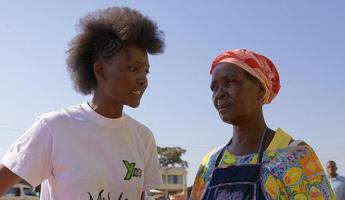
Recommendations
The efforts undertaken as part of this project and the lessons learned from the Nigerian pilot point to two principal needs: 1) to strengthen the collection of primary sex-disaggregated data (and develop associated datasets) at the subnational level, which can track changes in gender behavior and incidents; and 2) continued evidence-based interventions that further establish the importance of integrating gender perspectives in early warning systems.
The predominant view among early warning analysts remains that gender-sensitive indicators fail to provide any relevant or sufficient data that can be tracked, measured, or contribute to forecasting methods. This misconception stems from the unavailability of subnational gender data to serve as a baseline for future monitoring efforts and an over-reliance on long-term structural gender indicators that do not provide sufficient variations over the course of a year to detect any rapid changes in gender behavior or incidents or resulting risk of violence and conflict.
Addressing these challenges will require sustained interest and investment from a broad range of stakeholders and the further investigation, testing, and sharing of lessons learned to strengthen the integration of gender in early warning systems. As such, in addition to the five-step process outlined above, IFES makes the following recommendations to early warning systems and donors:
Recommendations to Early Warning System Implementors
- Link the development of gender-sensitive indicators with broader peacebuilding, conflict prevention, and deradicalization efforts already being undertaken by international and local organizations, including women’s organizations;
- Invest in pilots focusing on localized context-relevant primary data collection in areas prone to violence or conflict (“hot spots”), in close collaboration and partnership with local women’s organizations working on local conflict prevention and peacebuilding efforts, to develop and test indicators and establish localized baselines of data;
- Ensure these initiatives identify women’s organizations representing groups who may be at heightened risk of violence, including ethnic and religious minority and Indigenous groups;
- Institutionalize the collection of sex-disaggregated data and gender-sensitive analysis in early warning efforts, and where possible further disaggregate by ethnicity, religious, or cultural background, and LGBTQI individuals;
- Ensure gender parity within local monitoring teams to ensure that women monitors can meaningfully participate, and that safe and culturally sensitive interviews with local women are conducted;
- Ensure gender-sensitive indicators measuring rates of gender-based violence, including sexual violence, also collect instances violence against men and boys; and
- Set up tailored data management and analysis tools allowing for easy data entry and aggregating and disaggregating of data, so that analysts can quickly make sense of data received and logged. Data management tools can be created in existing, low-cost, or free spreadsheet applications.
Recommendations to International Donors
- Fund further initiatives across different geopolitical contexts and initiate knowledge sharing and lessons learned on the integration of context-specific gender-sensitive early warning indicators, data collection and policy responses;
- Invest in further research on documenting and analyzing concepts of masculinity as a driver of violence and conflict;
- Encourage the integration of gender-sensitive indicators in national conflict-prevention efforts, including in National Action Plans on Women, Peace, and Security and National Action Plans to Counter Violent Extremism; and
- Encourage multilateral and regional peacekeeping and monitoring missions to integrate gender-sensitive indicators as part of their protection of civilian-mandated tasks, in consultation with local women’s organizations.





